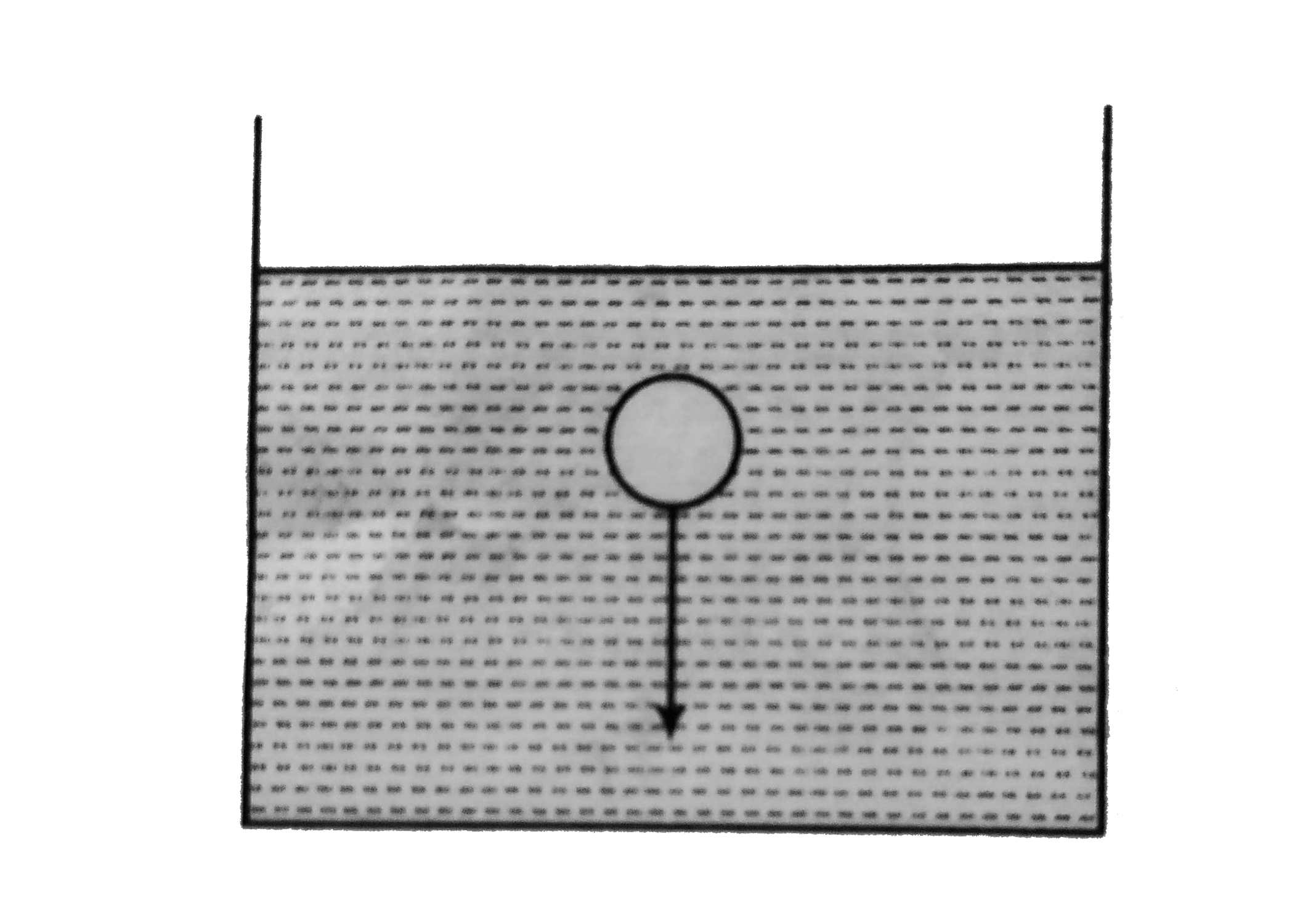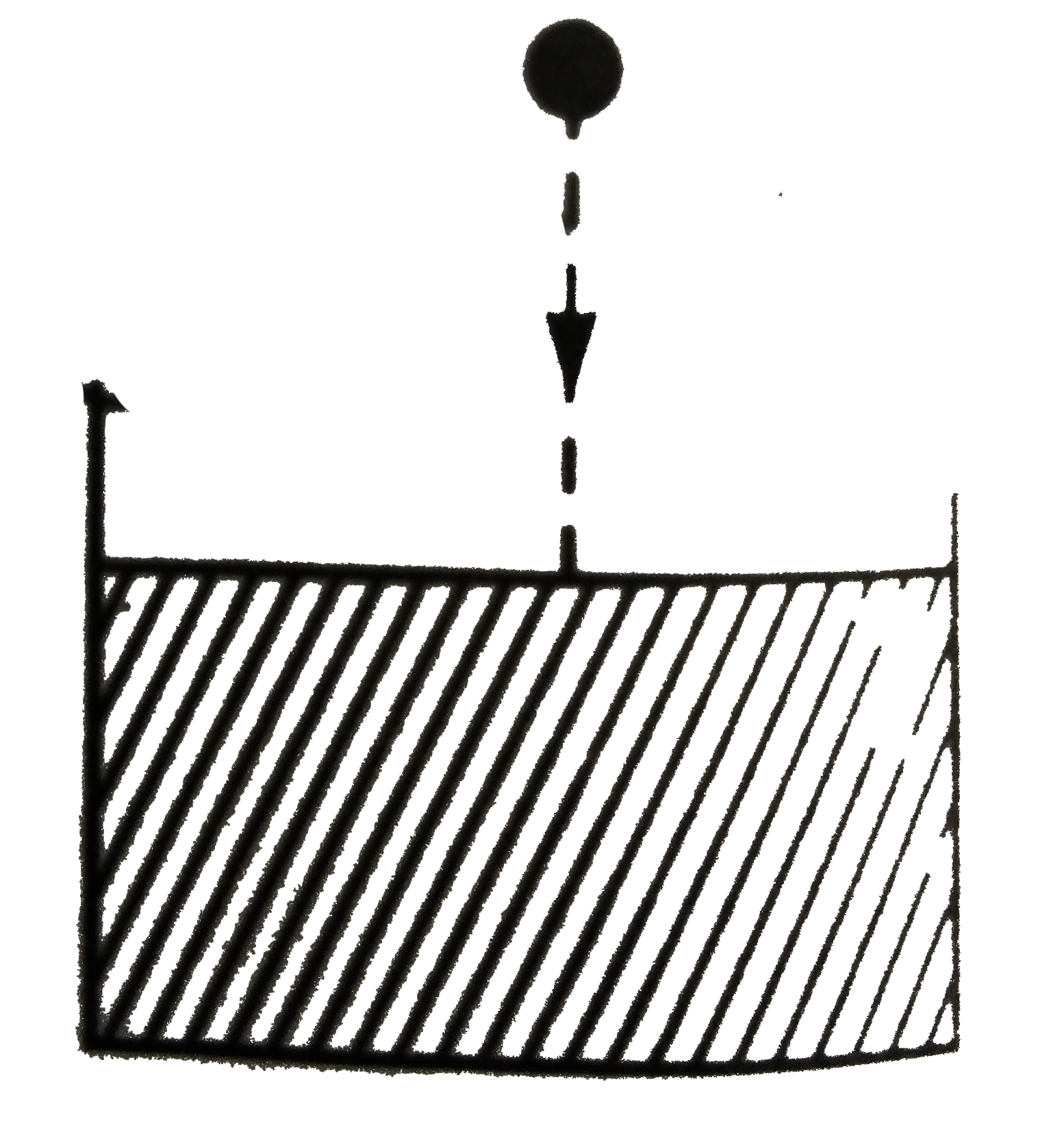A spherical solid ball of volume V is made of a material of density ρ1. It is falling through a liquid of density ρ2(ρ2<ρ1). Assume that the liquid applies a viscous force on the ball that is proportional to the square of its speed v, i.e., Fviscous=−kv2(k>0). The terminal speed of the ball is
(a) √Vg(ρ1−ρ2)k
(b) Vgρ1k
(c) √Vgρ1k
(d) Vg(ρ1−ρ2)k
The correct Answer is:A
To find the terminal speed of a spherical solid ball falling through a liquid, we can follow these steps:
Step 1: Identify the forces acting on the ball
When the ball is falling through the liquid, three main forces act on it:
1. Weight of the ball (downward)
2. Buoyant force (upward)
3. Viscous force (upward)
Step 2: Write the expressions for these forces
- Weight of the ball (W): The weight can be calculated using the formula:
W=V⋅ρ1⋅g
where V is the volume of the ball, ρ1 is the density of the ball, and g is the acceleration due to gravity.
- Buoyant force (B): The buoyant force can be expressed as:
B=V⋅ρ2⋅g
where ρ2 is the density of the liquid.
- Viscous force (F_viscous): The viscous force acting on the ball is given by:
Fviscous=−kv2
where k is a constant and v is the speed of the ball.
Step 3: Set up the equation for terminal velocity
At terminal velocity, the net force acting on the ball is zero. Therefore, we can set up the equation:
W=B+Fviscous
Substituting the expressions for weight, buoyant force, and viscous force, we get:
V⋅ρ1⋅g=V⋅ρ2⋅g+kv2t
where vt is the terminal velocity.
Step 4: Rearrange the equation to solve for terminal velocity
Rearranging the equation gives:
V⋅ρ1⋅g−V⋅ρ2⋅g=kv2t
Factoring out V⋅g from the left side:
V⋅g(ρ1−ρ2)=kv2t
Step 5: Solve for terminal velocity
Now, we can isolate v2t:
v2t=V⋅g(ρ1−ρ2)k
Taking the square root gives us the terminal velocity:
vt=√V⋅g(ρ1−ρ2)k
Final Answer
Thus, the terminal speed of the ball is:
vt=√V⋅g(ρ1−ρ2)k
---
When the ball is falling through the liquid, three main forces act on it:
1. Weight of the ball (downward)
2. Buoyant force (upward)
3. Viscous force (upward)
- Weight of the ball (W): The weight can be calculated using the formula:
W=V⋅ρ1⋅g
where V is the volume of the ball, ρ1 is the density of the ball, and g is the acceleration due to gravity.
B=V⋅ρ2⋅g
where ρ2 is the density of the liquid.
Fviscous=−kv2
where k is a constant and v is the speed of the ball.
At terminal velocity, the net force acting on the ball is zero. Therefore, we can set up the equation:
W=B+Fviscous
Substituting the expressions for weight, buoyant force, and viscous force, we get:
V⋅ρ1⋅g=V⋅ρ2⋅g+kv2t
where vt is the terminal velocity.
Rearranging the equation gives:
V⋅ρ1⋅g−V⋅ρ2⋅g=kv2t
Factoring out V⋅g from the left side:
V⋅g(ρ1−ρ2)=kv2t
Now, we can isolate v2t:
v2t=V⋅g(ρ1−ρ2)k
Taking the square root gives us the terminal velocity:
vt=√V⋅g(ρ1−ρ2)k
Thus, the terminal speed of the ball is:
vt=√V⋅g(ρ1−ρ2)k
Topper's Solved these Questions
- MECHANICAL PROPERTIES OF MATTER AND FLUIDSBook:SUNIL BATRA (41 YEARS IITJEE PHYSICS)Chapter:MECHANICAL PROPERTIES OF MATTER AND FLUIDSExercise:Subjective Problems
Explore 1 Video
- LAWS OF MOTIONBook:SUNIL BATRA (41 YEARS IITJEE PHYSICS)Chapter:LAWS OF MOTIONExercise:JEE Main And Advanced
Explore 79 Videos
- MOMENTUM & IMPULSEBook:SUNIL BATRA (41 YEARS IITJEE PHYSICS)Chapter:MOMENTUM & IMPULSEExercise:JEE Main And Advanced
Explore 30 Videos
Similar Questions
A small ball of mass m and density ρ is dropped in a viscous liquid of density σ. Ather some time the ball falls with a constant velocity. Calculate the viscous force acting on the ball.
View SolutionA body weighs W1 in a liquid of density ρ1 and W2 in a liquid of density ρ2. What is the weight of body in a liquid of density ρ3?
View Solution
Knowledge Check
A spherical solild of volume V is made of a material of density ρ1. It is falling through a liquid of density ρ2(ρ2<ρ1). Assume that the liquid applies a viscous froce on the ball that is proportional ti the its speed v, i.e., Fviscous=−kv2(k>0). The terminal speed of the ball is
A√Vg(ρ1−ρ2)kBVgρ1kC√Vgρ1kDVg(ρ1−ρ1)kA solid ball of density ρ1 and radius r falls vertically through a liquid of density ρ2. Assume that the viscous force acting on the ball is F=krv, where k is a constant and v its velocity. What is the terminal velocity of the ball ?
A(4πgr2ρ1−ρ23k)B(2πrρ1−ρ22gk)C(2πg(ρ1+ρ2)3gr2k)DNone of theseA ball of density ρ is released from deep inside of a liquid of density 2ρ. It will move up
Awith an increasing accelerationBwith a decreasing accelerationCwith a constant accelerationDwith zero acceleration
A ball of volume V and density ρ1 is moved downwards by a distance 'd' in liquid of density ρ2. Find total change in potential energy of the system.

View SolutionThe terminal velocity V of a spherical ball of lead of radius R falling through a viscous liquid varies with R such that
View SolutionA small ball (mass m) falling under gravity in a viscous medium experience a drag force proportional to the instantaneous speed u such that Fdrag=ku. Then the terminal speed of ball within viscous medium is
View SolutionA body of volume V and desnity ρ is initially submerged in a non-viscous liquid of density σ(>ρ). If it is rises by itself through a height h in the liquid. Its kinetic energy will
View SolutionA ball of density ρ is dropped from a height on the suraca of a non-visous liquid of dinsity 2ρ. Choose the correct options.

View Solution